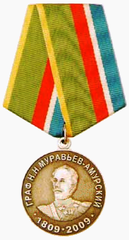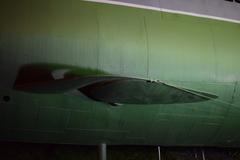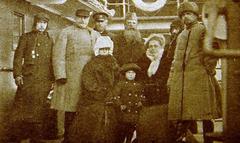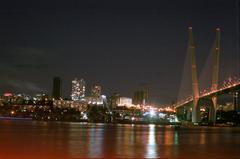S.O. Makarov Pacific Naval Institute: Visiting Hours, Tickets, and Historical Significance in Vladivostok
Date: 03/07/2025
Introduction
The S.O. Makarov Pacific Naval Institute in Vladivostok stands as an enduring symbol of Russian naval tradition and the strategic significance of Russia’s presence in the Asia-Pacific. Established in 1937 and named after Admiral Stepan Osipovich Makarov—a celebrated naval commander, oceanographer, and innovator—the institute continues to shape the officers of the Pacific Fleet. Its story is deeply intertwined with Vladivostok’s own maritime legacy, making it a focal point for anyone interested in naval history, military education, and Russian culture.
This detailed guide provides visitors with comprehensive insights into the institute’s history, educational mission, and cultural impact, as well as practical information on access, tickets, events, and related attractions. Due to its operational military status, public access is limited and typically coincides with special events or organized tours, offering rare glimpses into Russia’s naval heritage.
For travelers to Vladivostok, combining a visit to the institute with other maritime attractions—such as the Vladivostok Fortress, S-56 Submarine Museum, and Russky Island—creates a well-rounded understanding of the city’s pivotal role as Russia’s Pacific gateway.
Official information, event schedules, and visiting procedures can be found on the S.O. Makarov Pacific Naval Institute website and Vladivostok tourism portals. This guide also covers travel tips, etiquette, and security protocols for a smooth and rewarding experience.
About the S.O. Makarov Pacific Naval Institute
Founded to support the Soviet Pacific Fleet, the S.O. Makarov Pacific Naval Institute (also known as the Pacific Higher Naval School) has served as a premier center for naval education and research. Admiral Makarov’s pioneering spirit lives on through the institute’s commitment to both military excellence and scientific advancement, making it an essential institution for the defense and exploration of Russia’s eastern maritime frontiers (Travel All Russia).
Historical Legacy
Founding and Development
Vladivostok’s strategic location as a Pacific port city fueled the establishment of the institute in 1937. The school’s mission was to prepare officers for the growing needs of the Pacific Fleet, equipping them with expertise in navigation, engineering, and defense strategy.
The Soviet Era and Modernization
During the Cold War, the institute played a crucial role in training officers in submarine warfare, missile technology, and advanced seamanship. The post-Soviet period saw curriculum updates, adoption of new technologies, and expansion of international cooperation, ensuring its continued relevance (Encyclopedia.com).
Admiral Stepan Osipovich Makarov
The institute’s namesake, Admiral Makarov, was a visionary naval leader, oceanographer, and inventor. His achievements in naval tactics and technology, as well as his tragic death during the Russo-Japanese War, are commemorated throughout the campus and its museum (Presidential Library).
Educational and Strategic Importance
The institute’s rigorous academic programs blend theoretical coursework with hands-on training aboard simulators and vessels. Graduates are recognized for their leadership, discipline, and expertise in navigation, engineering, and oceanography—skills vital to the Pacific Fleet’s operational readiness. The campus also serves as a hub for oceanographic research, reflecting Admiral Makarov’s scientific legacy (Encyclopedia.com).
Visitor Information
Visiting Hours & Ticketing
- General Access: The institute is an active military facility, so public entry is limited to special events (such as Navy Day, graduation ceremonies, and open days).
- Museum Hours: On select dates, the museum and certain exhibition areas are open from 10:00 AM to 5:00 PM, Tuesday through Sunday. Always verify current details via official channels.
- Tickets: Admission is typically free during public events. Guided tours or museum visits may require tickets, available through advance booking or at the entrance.
- Arranging Tours: Advance coordination is necessary. Contact the institute or trusted local tour operators for group visits (KoreaKonsult).
Security and Identification
- Entry Protocols: Expect security checks, ID verification (passport for foreigners), and possible escort by personnel.
- Photography: Generally restricted inside the campus; permitted in public or museum areas during events, but always request permission.
Accessibility and Language
- Mobility: Main public areas are generally accessible, but some historic buildings may pose challenges. Contact the institute ahead of time if you have specific needs.
- Language: Russian is the primary language. English-speaking guides are limited; arrange for translation if needed.
Dress Code and Conduct
- Wear modest, respectful attire (business or smart casual).
- Adhere to all instructions from staff.
- Maintain decorum, especially during ceremonies.
Special Events and Ceremonies
- Graduation Ceremonies: These public events feature parades, awards, and naval demonstrations—a unique way to experience Russian military tradition (TASS Photo Agency).
- Navy Day: Major celebrations open to the public, with performances and exhibitions.
Nearby Attractions
Enhance your itinerary with other notable sites:
- S-56 Submarine Museum: Tour a WWII-era submarine.
- Vladivostok Fortress: Explore historic fortifications with panoramic views.
- Russky Island: Visit the Voroshilov Battery and enjoy coastal scenery (Vladivostok.travel).
Travel Tips
- Best Time to Visit: Late spring to early autumn offers mild weather and higher chances of public events (Vladivostok Guide).
- Transportation: The institute is centrally located—accessible by bus, tram, or taxi. Yandex.Taxi and local ride-sharing apps are reliable.
- Dining: Sample local cuisine at renowned restaurants like Zuma or Pyaty Okean (Vladivostok Guide).
- Souvenirs: Look for naval-themed memorabilia at the institute’s museum (during events) or at the city’s markets.
FAQ
Q: Can I visit the S.O. Makarov Pacific Naval Institute at any time?
A: No. Access is restricted and available only during special events or pre-arranged tours.
Q: Is there an entrance fee or ticket required?
A: Admission is typically free during public events; otherwise, tickets may be needed for tours or museum access.
Q: Are tours conducted in English?
A: English-speaking guides are rare. Arrange interpretation through your tour provider.
Q: Is the site accessible for those with disabilities?
A: Main public areas are accessible, but historic buildings may have limited access. Contact the institute for details.
Q: Can I take photographs?
A: Only in permitted areas and with permission; restrictions apply throughout the campus.
Summary and Final Recommendations
The S.O. Makarov Pacific Naval Institute is a living testament to Russia’s maritime strength and Vladivostok’s identity as a naval city. While general access is limited, attending public events or arranging tours offers unique insights into naval education, tradition, and history. Combine your visit with other key attractions for a comprehensive exploration of Vladivostok’s strategic maritime landscape.
For the best experience:
- Monitor official announcements and tourism portals for event schedules.
- Plan ahead for tours, language assistance, and accessibility needs.
- Follow security and etiquette protocols at all times.
To deepen your understanding, explore related museums, monuments, and guided tours, and use digital tools like the Audiala app to enrich your journey.
Sources and Further Information
- S.O. Makarov Pacific Naval Institute Official Website
- Travel All Russia – Vladivostok Sights
- KoreaKonsult – Vladivostok Visitor Information
- Vladivostok Travel Guide
- Stepan Osipovich Makarov Biography (Encyclopedia.com)
- Vladivostok Tourism Portal
- Vladivostok Fortress and Naval Attractions
- TASS Photo Agency: Graduation Ceremony Coverage



